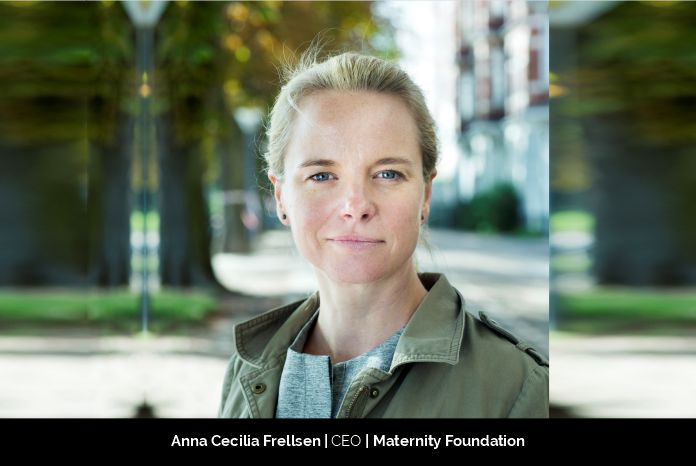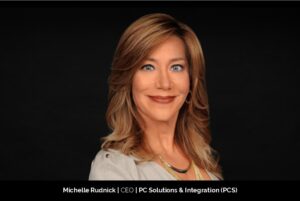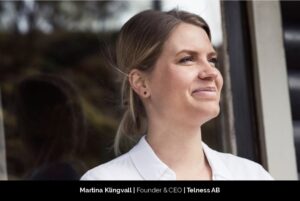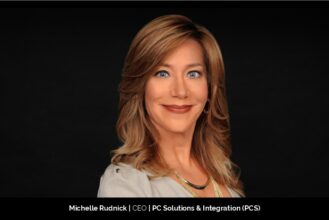Anna Cecilia Frellse: Much More than an Entrepreneur
The 10 Most Successful Women Revamping The Future in Technology 2021

Maternal mortality is one of the greatest health
inequalities in the world. 99 % of the 800 women, who die every day of causes
related to pregnancy and childbirth, live in low and middle-income countries.
In addition, 14000 babies also lose their lives before, during or soon after
birth. However, this global tragedy of maternal and newborn mortality can
actually – in the vast majority of cases – be prevented. And it is not
necessarily just about medical equipment and building big hospitals. The key to
preventing maternal mortality is simple: The woman has a skilled birth
attendant by her side when she gives birth. With the vision of “no woman should
die giving life,” Maternity Foundation focuses on training midwives and other
skilled birth attendants on how to handle life-threatening complications. Led
by Anna Cecilia Frellse, CEO of the
company, Maternity Foundation aims to reduce
maternal and newborn mortality in low-and middle income countries.
A long Road
Anna joined Maternity Foundation in 2013, and her main focus
has been on expanding Maternity Foundation’s global reach and impact by using
innovation and technology as a driving force. It has been a transition for
Anna, from a more traditional NGO working on the ground in Ethiopia to a global
digital program across sub Saharan Africa and SE Asia.
Anna believes that their greatest challenge – which is
probably also their greatest achievement – is finding the right model for
Maternity Foundation in terms of how to bring our programmatic know-how to scale.
“Our focus is on how to most effectively implement digital maternal and newborn
health tools such as our Safe Delivery App into existing health programs. We
work primarily through partners rather than setting up offices with our own
staff in each of our priority countries – and this makes us exponentially able
to reach many more skilled birth attendants with our trainings. So in many ways
we have disrupted the traditional NGO way of operating,” Anna said. She also
thinks working with multiple partners – including large NGOs, ministries of
health, the UN etc. – in almost 20 different countries can obviously be
challenging at times, for example in terms of striking the right balance
between standardizing their services on a global level and adapting to the
national guidelines and needs in their partner countries.
With every problem that anyone battles and wins, comes the
achievement moment to cherish. For Anna, her greatest organizational
achievement is probably building a strong team of almost 40 colleagues in
Denmark, Ethiopia and the US. Also, she is proud of how they have established
Maternity Foundation as a global player within the maternal and newborn health field.
“This has been quite a journey! The first time we went to the UN General
Assembly in New York five years ago we had to knock on many doors to get
ourselves invited to meetings and events. This year, we were asked to present
at UNFPA’s campaign event,” she added.
Focusing on Capacity Building
“While nearly every country and region have improved
maternal and newborn health over the last two decades, girls and women –
particularly in developing countries – continue to face significant risks
during pregnancy and childbirth. Giving childbirth should NEVER be with the
risk of losing your own life. That is a basic human right. That is why
Maternity Foundation aims to ensure that no women and their newborns should
risk their lives during pregnancy and childbirth regardless of where in the
world they are,” shared Anna on the mission of Maternity Foundation.
Maternity Foundation’s approach is to focus on capacity
building of health workers and midwives in developing countries – and to use
innovative approaches and technologies to have the strongest possible outreach
and impact. It has been working in Ethiopia for more than 10 years, building
capacity of health workers and midwives and empowering women and their
communities to seek skilled care during pregnancy and childbirth.
Implementing digital health tools
About five years ago, Anna and her team started exploring
how to use the mobile revolution to reach even more skilled birth attendants –
even in the most remote areas. It is her experience that at many health centers
across low- and middle-income countries, there may not be electricity or
running water, but the health worker will often have a mobile phone in his or
her hand. “Hence, building on our programmatic expertise, we developed the Safe
Delivery App in partnership with Copenhagen University and University of
Southern Denmark. The Safe Delivery App includes simple, intuitive animated
instructions that guide the health worker in how to handle childbirth
emergencies. It includes quizzes, a description of practical procedures and
drug lists that midwives and health workers can always refer to – either on the
job, in their spare time or as part of their training,” Anna further added.
Today, the app has been downloaded over 55,000 times and is
being used in more than 40 different countries, with Ethiopia, India, Ghana,
Laos and Myanmar being some of Maternity Foundation’s focus countries. The team
has also started working in emergency and refugee settings, currently in
Ethiopia and Somalia.
Working Towards a Goal
Anna has a business background with an MBA from IESE, seven
years as a consultant at Mckinsey & Company as well as the CEO of a
startup. Anna’s competencies are broad and strategic rather than within a
specific area of expertise. However, her team of Maternity Foundation is made
of a group of very smart specialists – within medical and clinical areas,
global health, development programs, communication and IT. Her role is to make
sure that all these different areas of expertise work together to contribute to
the same goal, which is to ensure a safer childbirth for mothers and newborns.
When asked how she manages to balance between professional and personal life, Anna answered,
“That is always a tough one that I think most of us struggle with. For me the
most important criteria is flexibility and that I get more energy out of my
work than vice versa. In many ways my work place is global. Many meetings are
Skype and I travel quite a bit, but when I am home, I prioritize to work from
home at least one day a week and take many calls from home. This flexibility
reflects the working culture at Maternity, where many of us have families and
smaller children.”
Digital Learning will be the Key!
Going into next year, Anna believes digital learning holds a
lot for the future in terms of tapping into the next generation of digital
innovations, including VR, AR, AI etc. Furthermore, she considers herself proud
to be a part of Maternity Foundation. Anna concluded by saying, “we have a huge
potential in changing the way that health workers are training and how they can
become better at handling emergencies during childbirth.”









